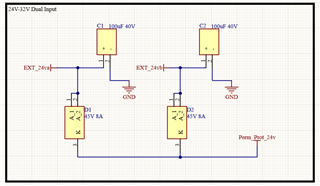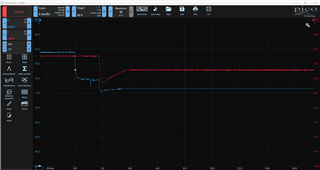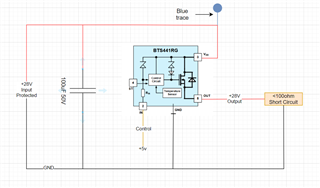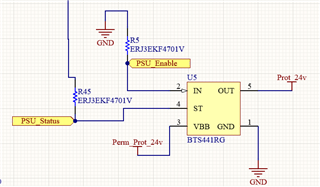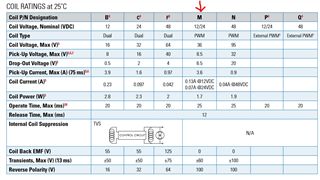Hi all,
I am designing a PCB which needs to have circuitry that is enabled through a HS switch output (28v supply). I need to protect the VIN of this switch in the scenario that Vout shorts to ground. The HS switch (TPS281C30) says that it will detect a short and open in 0.5uS. My question is what can be used to stop the VIN being pulled low for that short time period until the switch can cut off the output and isolate the short circuit?
It is vital that I have the VIN part of the circuit protected from any short circuits after the switch as there are crucial components on the VIN side that need to remain powered permanently, if there any other sugestions as to how this could be done that would be great.
Thanks in advance for any help!


